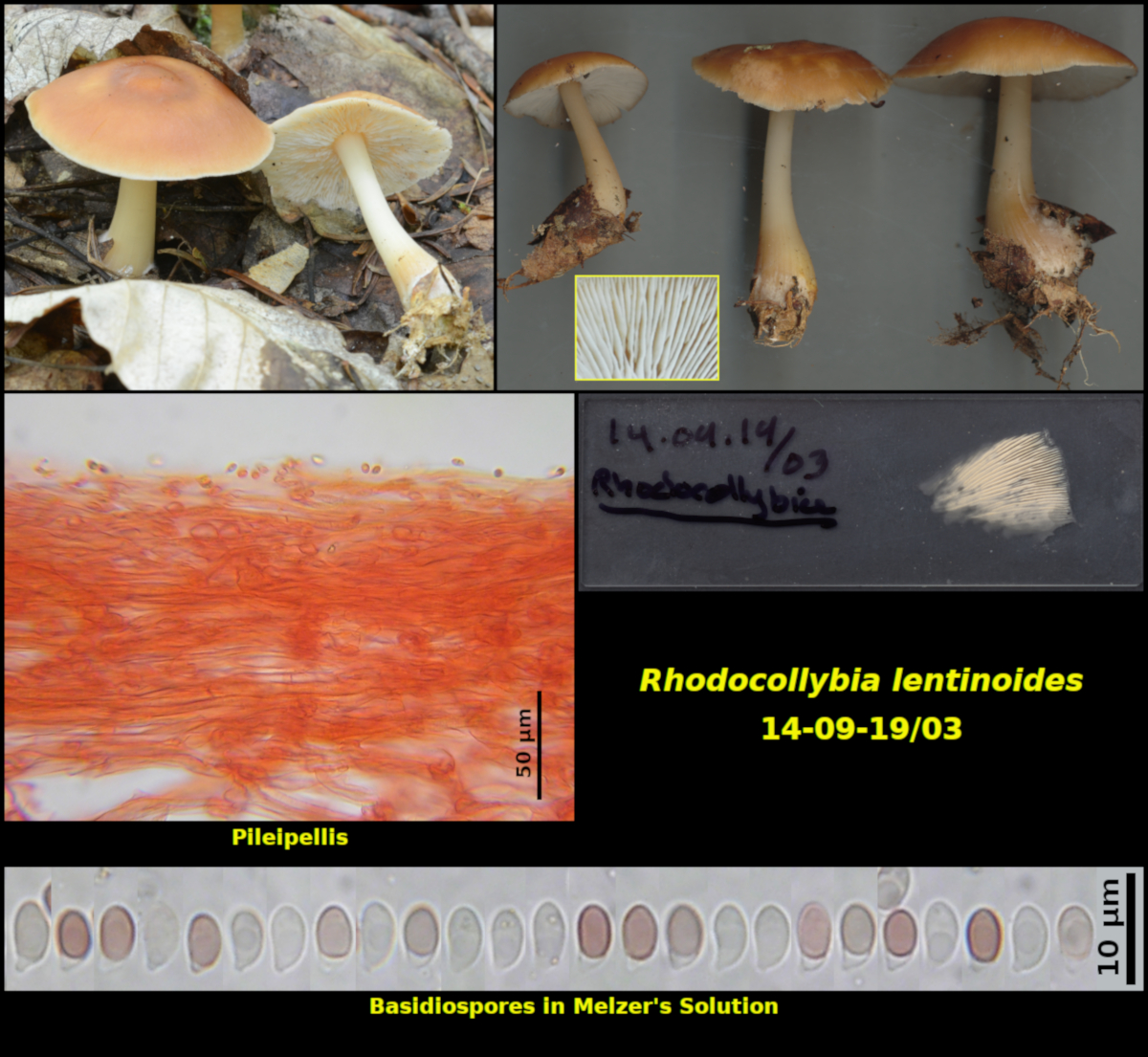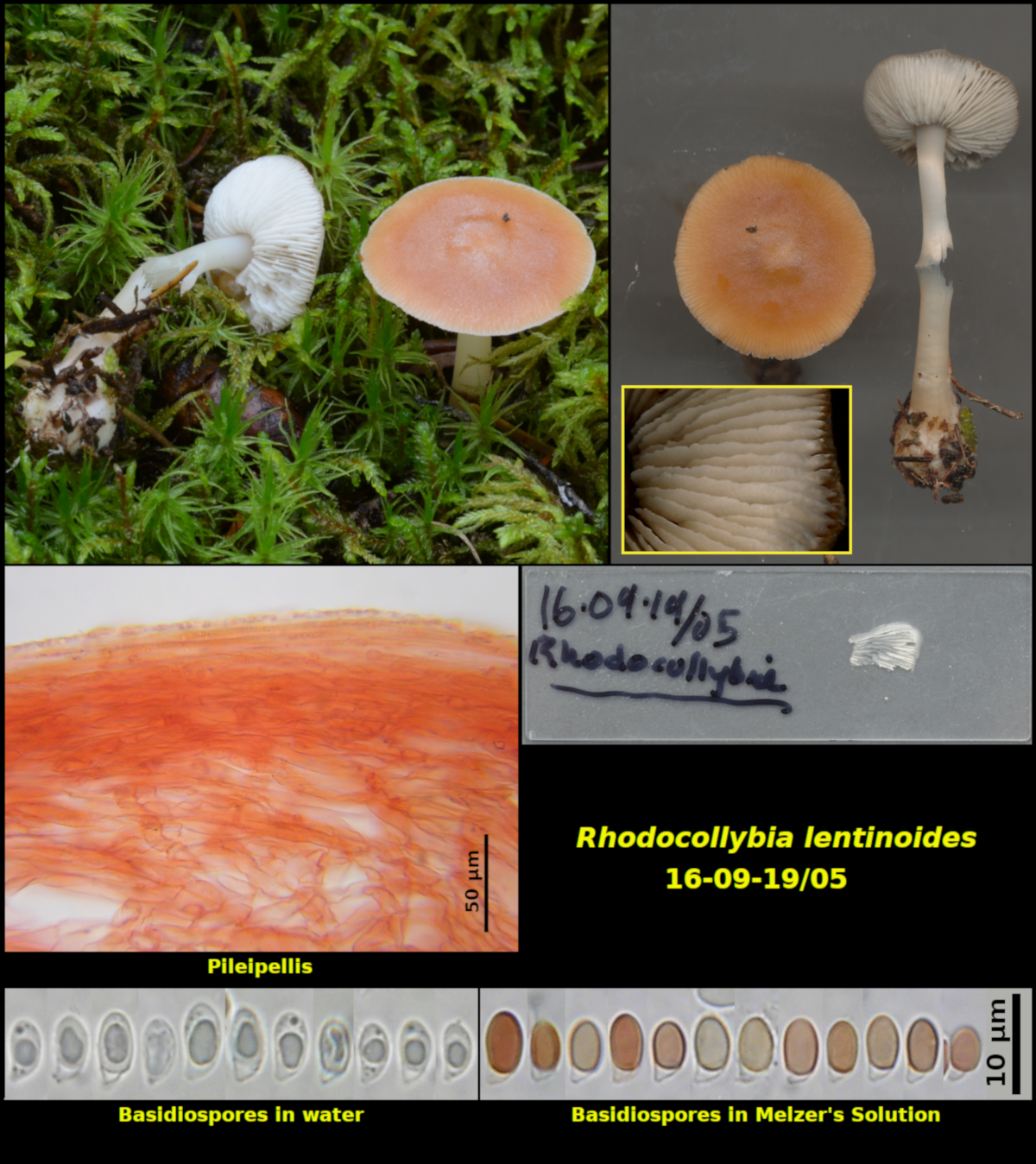Fleshy Fungi of New Brunswick >>
Rhodocollybia lentinoides
Rhodocollybia lentinoides (Peck) Halling


Scattered (3) in soil in a mature hardwood forest, associated with Betula alleghaniensis, Cornus cornuta and Abies balsamea, Hell’s Gate Hardwoods Protected Natural Area, New Brunswick (14-09-19/03).
Gregarious (2) among mosses in wet seepage area in the forest, associated with Abies balsamea, Picea rubens, and Thuja occidentalis, Goodfellow Brook Protected Natural Area, New Brunswick (16-09-19/05).
Bsidiospores pale orange yellow (HSV30-35:02-05:100) in spore print when viewed in daylight, dacryoid, smooth, often distinctly dextrinoid in Melzer’s Solution above an unstained base, with staining reaction in KOH+Congo Red similar to that in Melzer’s, 4.7-6.3 X 2.7-3.2 µm, Q = 1.62-2.16 (average[35]: 5.5 X 3.0 µm, Q = 1.85) (14-09-19/03), 5.5-7.2 X 2.9-3.7 µm, Q = 1.66-2.16 (average[35]: 6.0 X 3.2 µm, Q = 1.86) (16-09-19/05). Cheilocystidia lacking. Pileipellis a thin ixocutis of narrow hyphae above a thicker dense subcutis. Pileus trama loosely interwoven.
In the field R. lentinoides resembles species of Gymnopus and Rhodocollybia. Although the lamellae with eroded edges were orginally thought to distinguish it from similar species, this can happen in older fruiting bodies of R. butyracea as well. The small, narrow basidiospores with a strong dextrinoid reaction in Melzer's Solution, lack of cheilocystidia and a thin ixocutis overlaying a dense subcutis of narrow hyphae in the pileipellis are more reliably diagnostic.
In common with other species of Rhodocollybia, our collections produced a pale yellow spore print. This spore print appeared to be rather sticky in nature and closely adherant to the microscope slide where it was deposited. When spores were removed from this print for microscopic examination they remained strongly adherant to one another. This clumping was also seen at the edge of the lamellae.
Other than a slight difference in the regularity of the dextrinoid reaction of the basidiospores, Collections 14-09-19/03 and 16-09-19/05 are nearly identical microscopically, but differ to some extent in their gross appearance and ecology. Collection 14-09-19/03 was growing in an old hardwood stand with only scattered firs while Collection 16-09-19/05 was in a very wet forest dominated by conifers. In addition, basidiomata of Collection 14-09-19/03 were rather sturdy, resembling those of R. butyracea or Gymnopus dryophila, while those of Collection 16-09-19/04 were rather fragile and Amanita-like.
Rhodocollybia lentinoides does not seem to be a common species in New Brunswick. These are only the second and third records for the province. Interestingly, all three collections were found less than 30 km apart (and 40 years apart!) in the eastern lowlands bordering the Gulf of St. Lawrence.
Photograph: D. Malloch (14-09-19/03, 16-09-19/05).